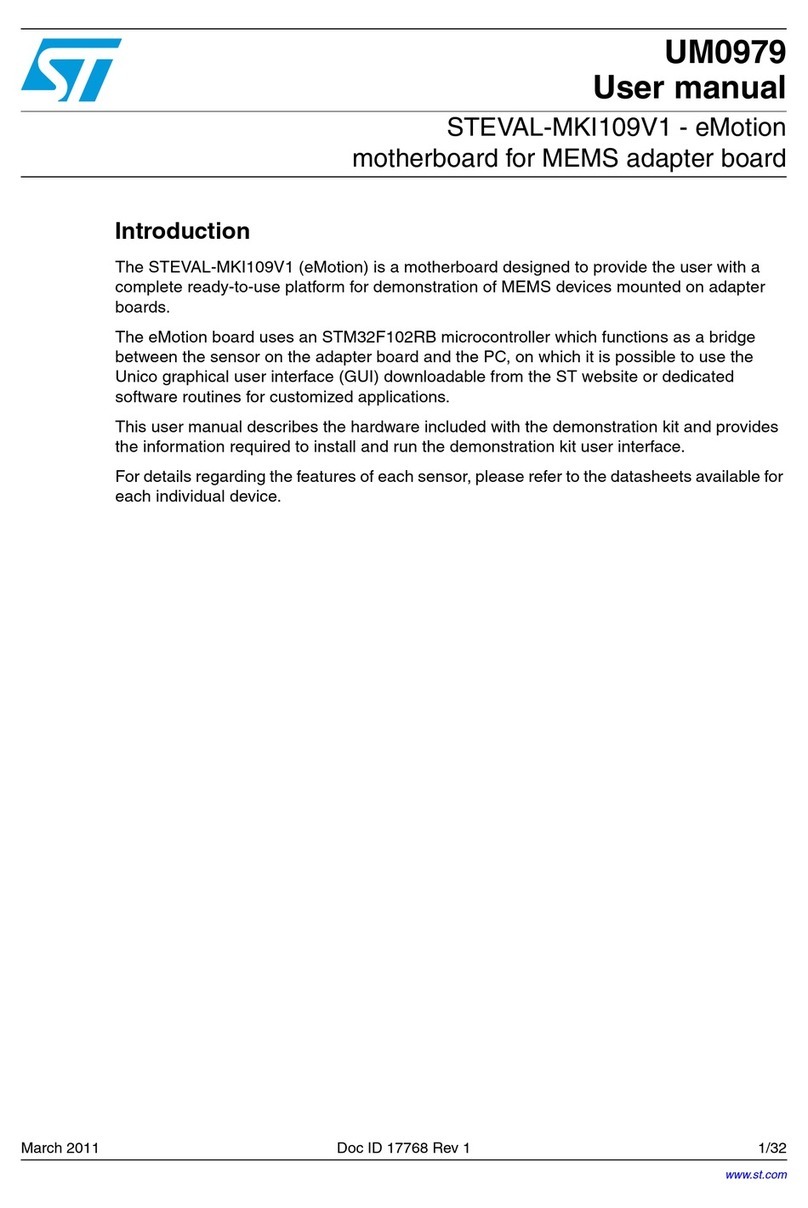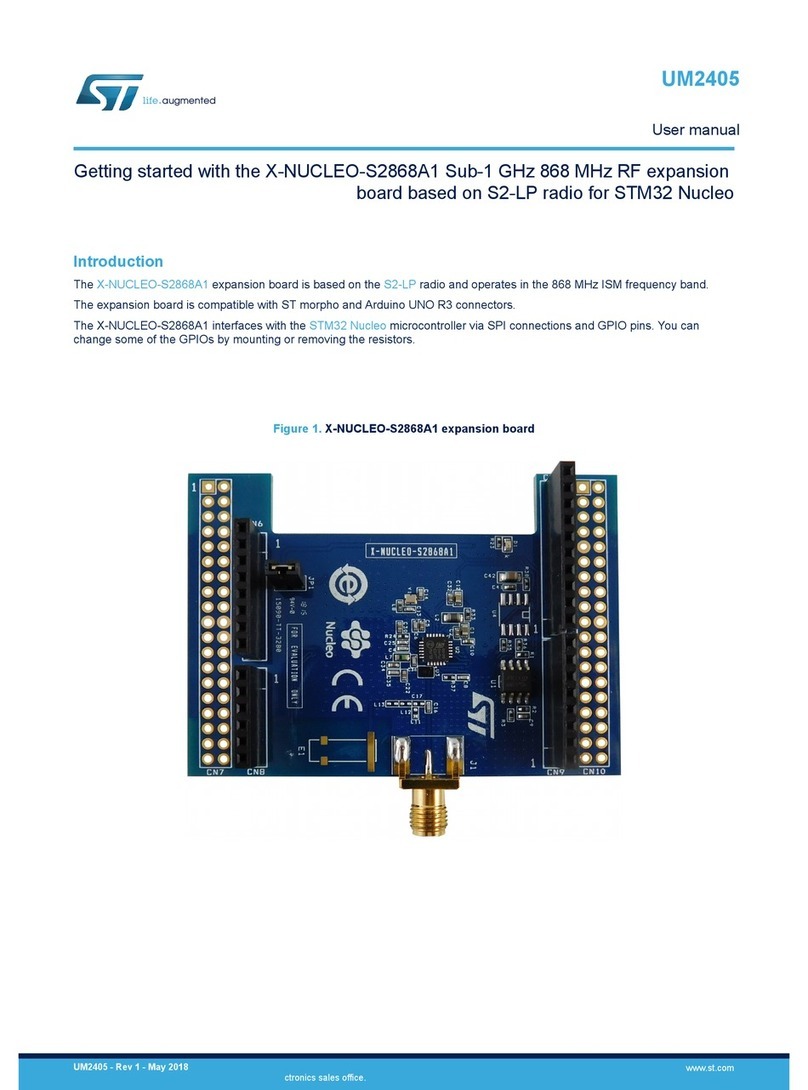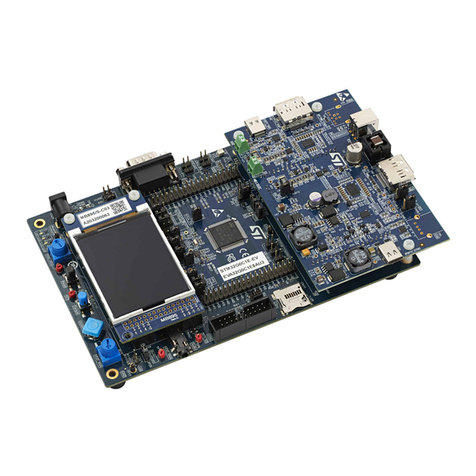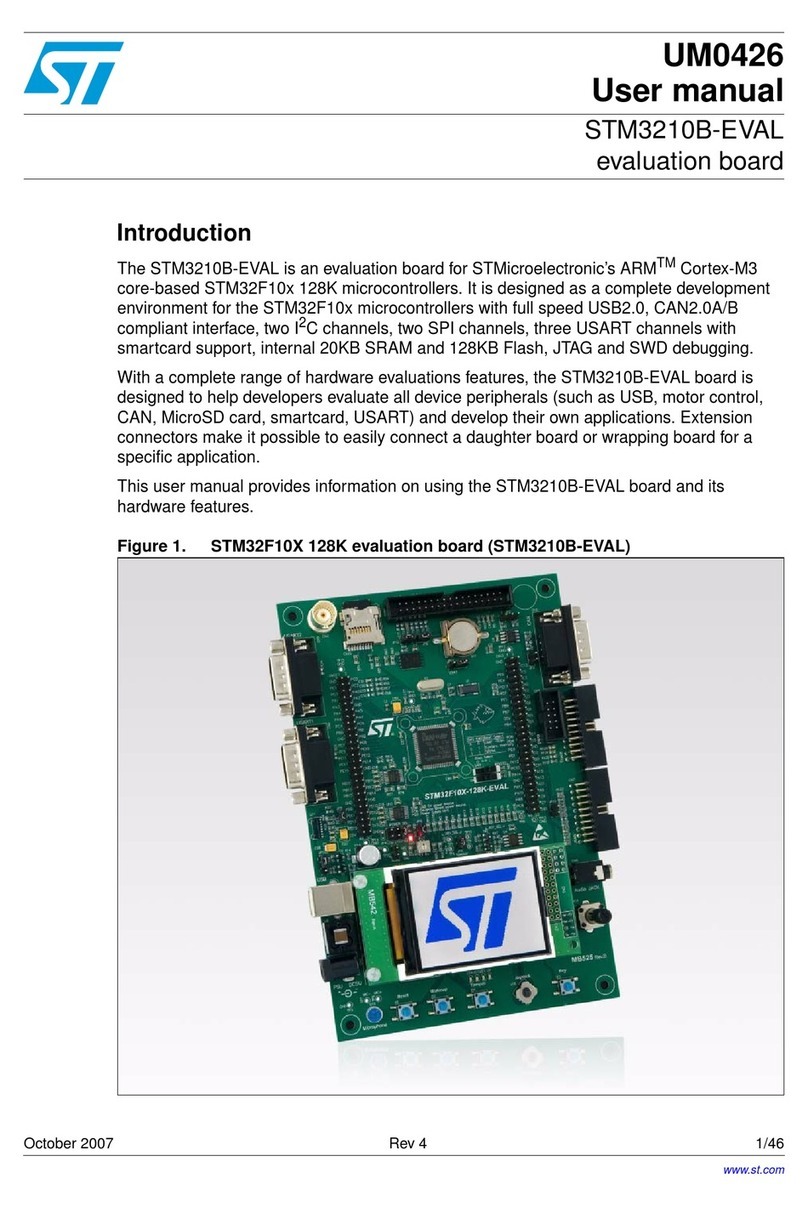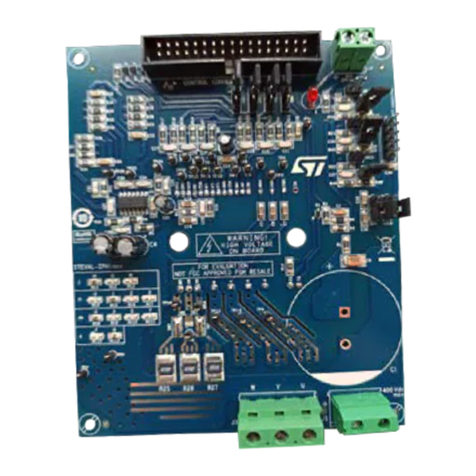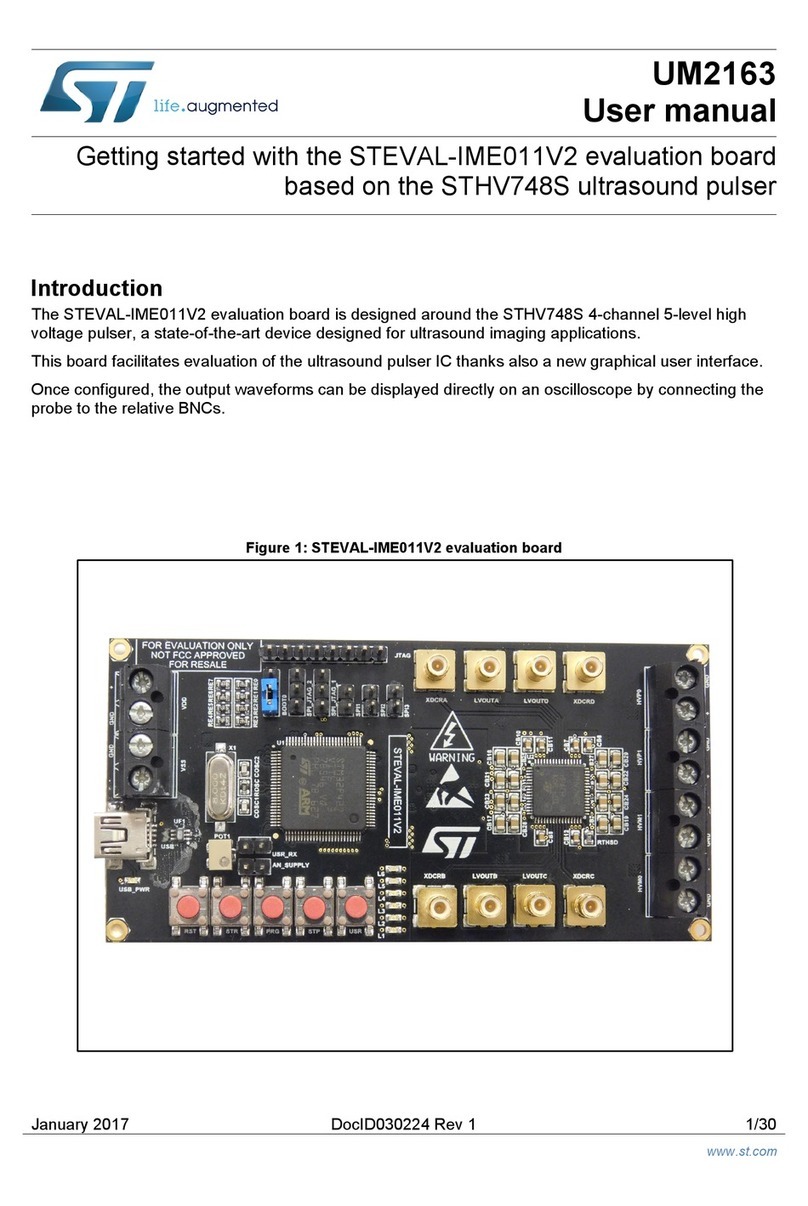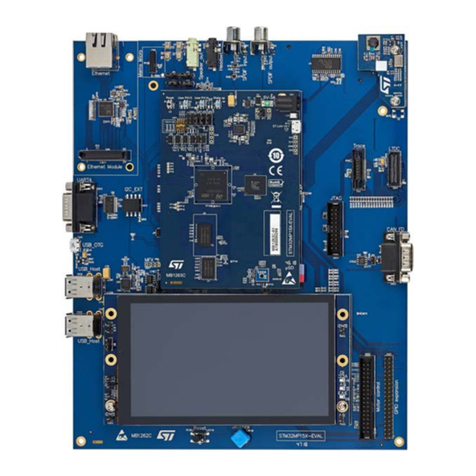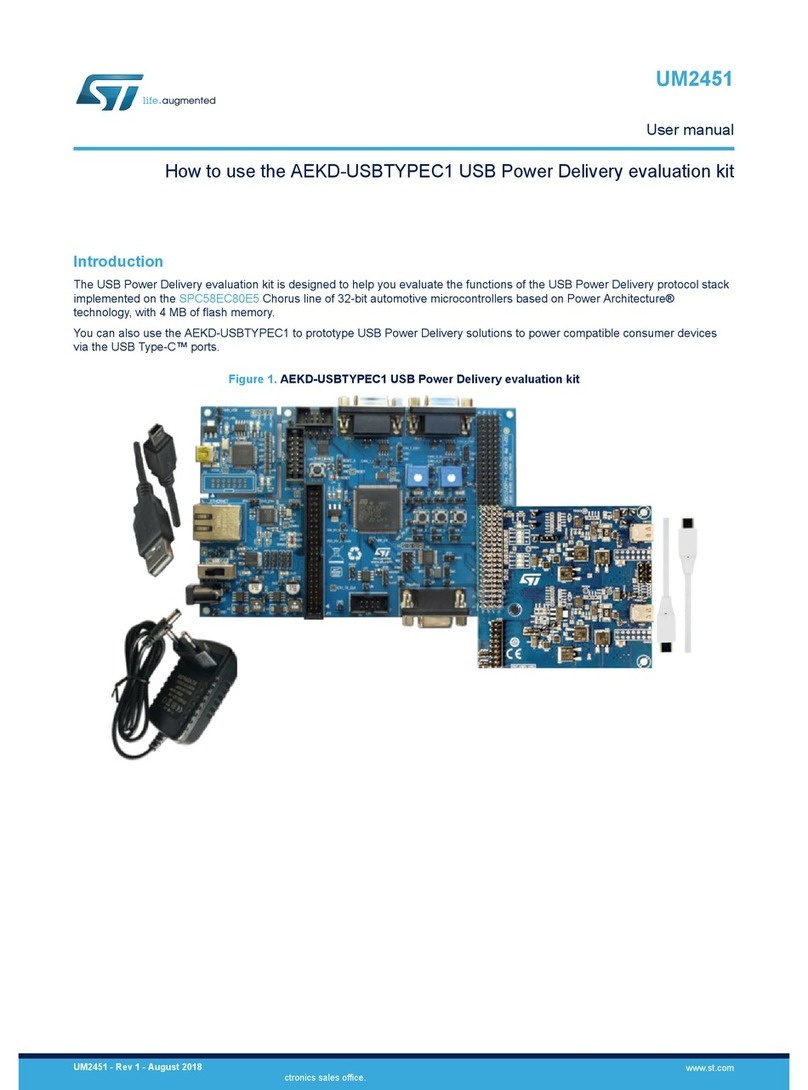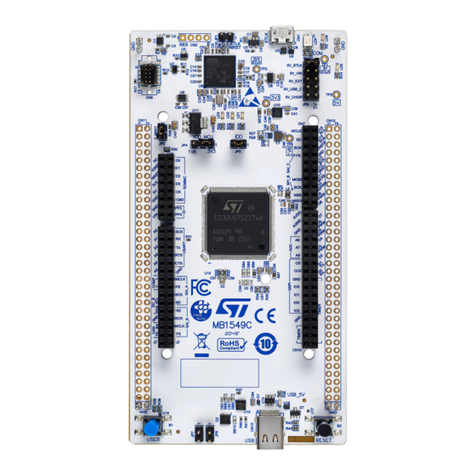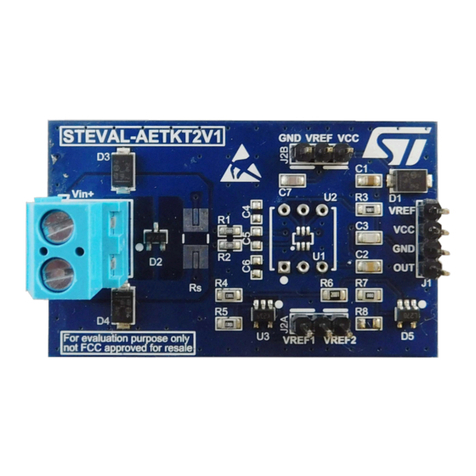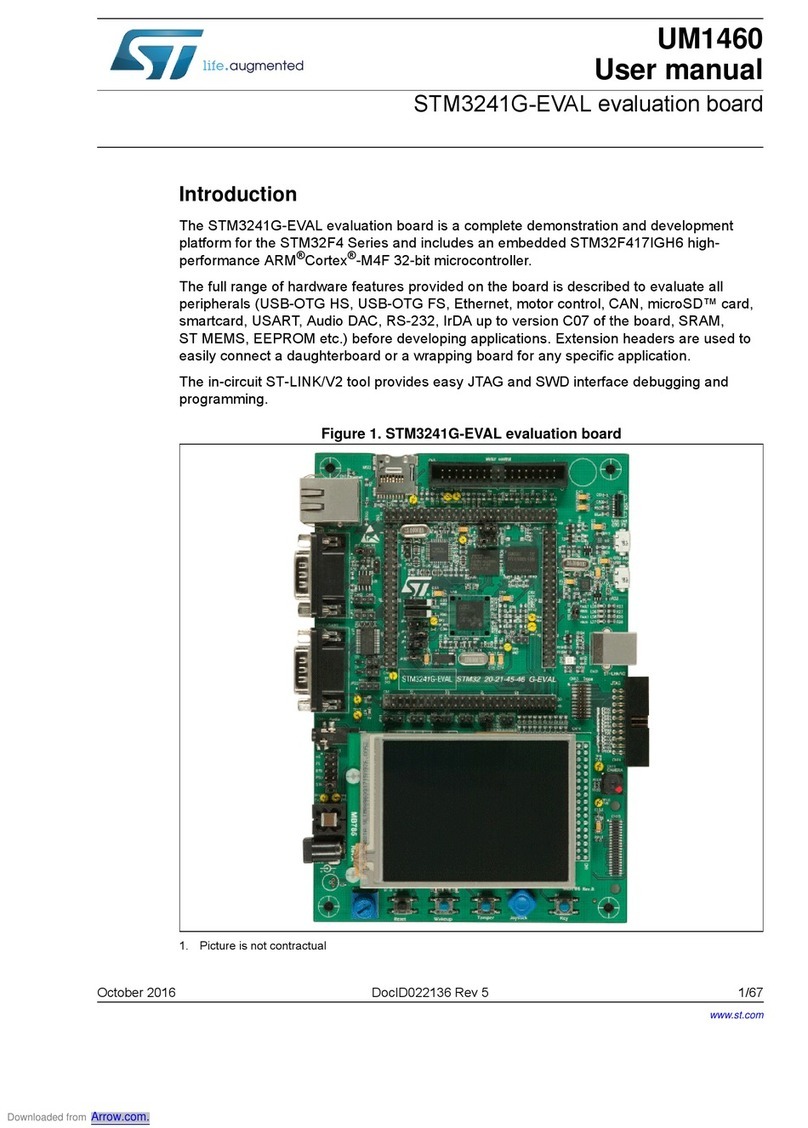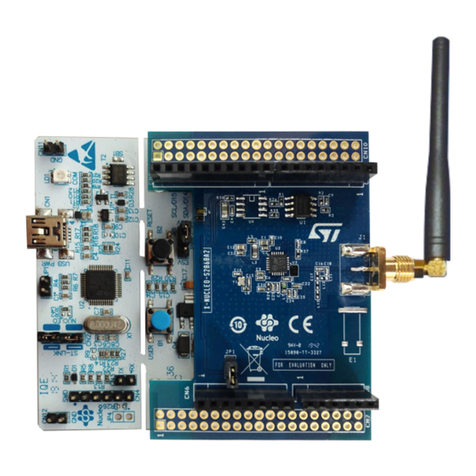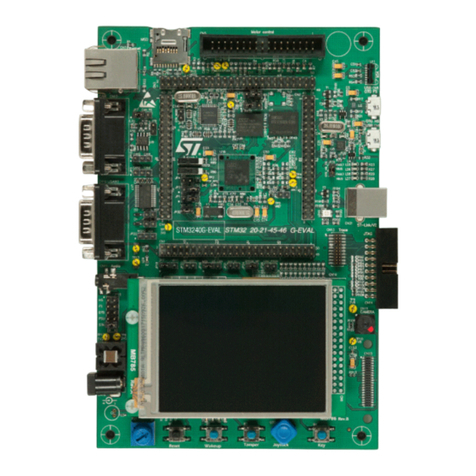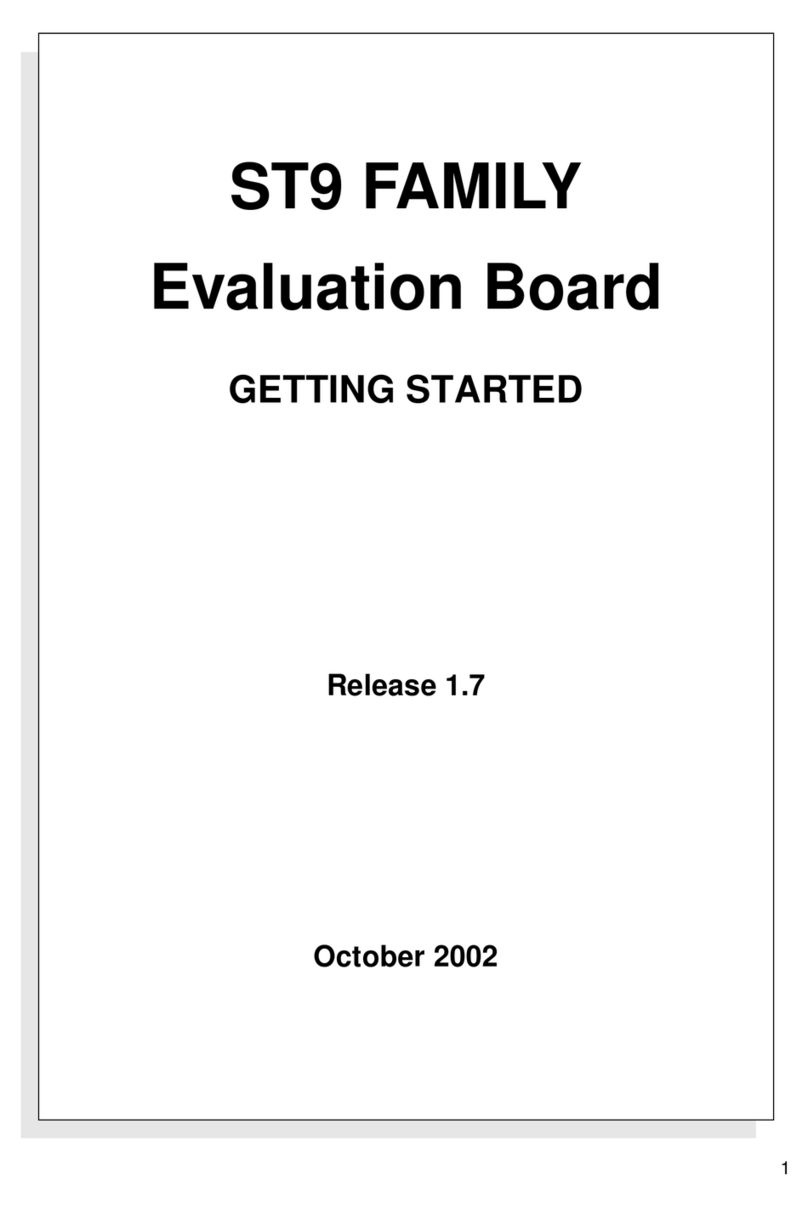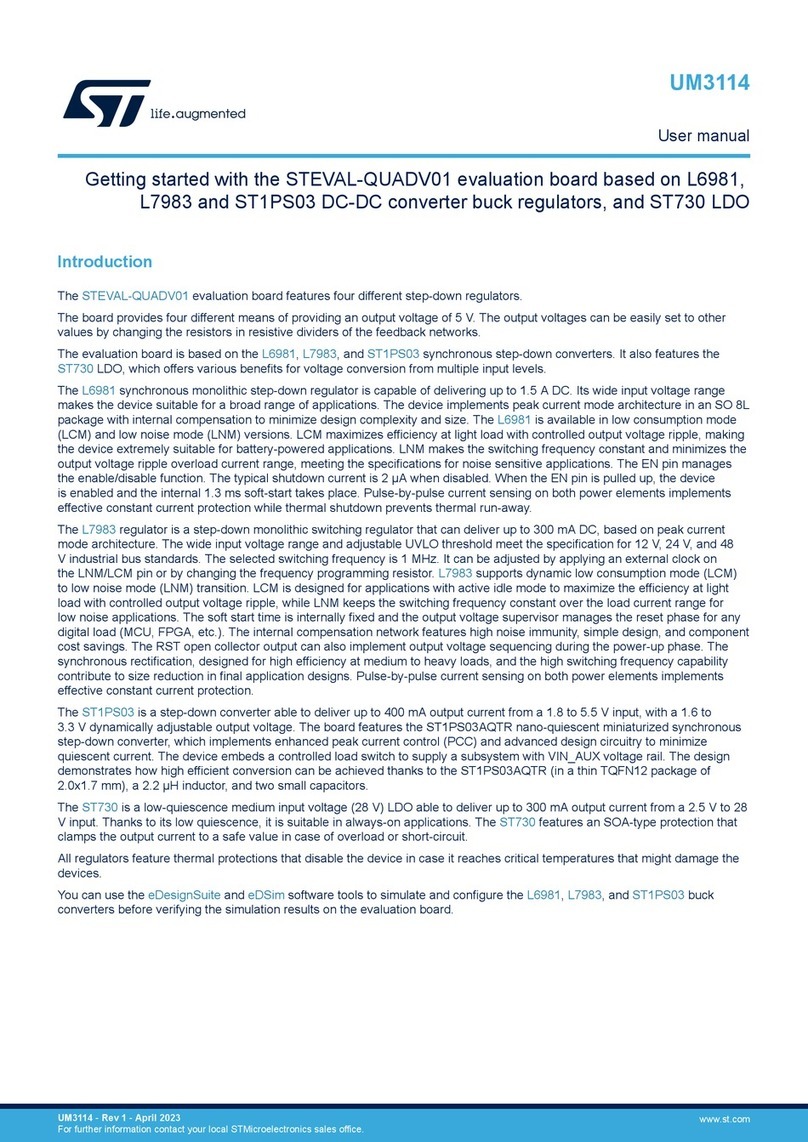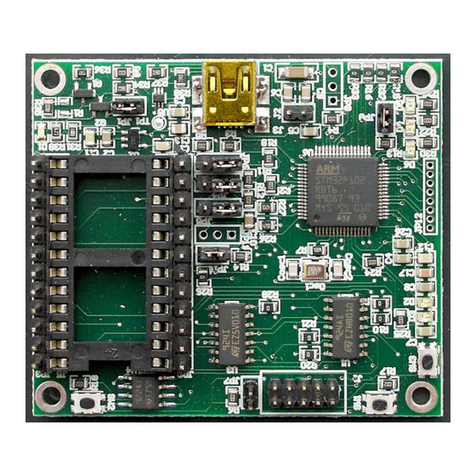
1.2 Gate driver supply voltage (VH)
It is possible to provide the gate driver supply voltage VH in several alternative ways:
• Using isolated DC-DC converters in the standard SIP7 package (U5, U6).
• Using the bootstrap diode D3 by supplying the low-side driver via J1 and mounting the resistor R3 (initial
suggested value 10 Ω).
• Supplying directly J1 and J2 connectors (not mounted) with two separated isolated supplies.
The faster, easier and safer way to supply the board is by using isolated DC-DC converters.
The bootstrap diode supplying method is much simpler and less expensive but does not allow evaluating negative
gate driving voltage. The bootstrap diode is 1200 V rated; if a higher bus voltage is required the diode must be
replaced accordingly.
Supplying externally via J1 and J2 is generally not recommended, unless using supplies specifically designed for
this purpose (with high voltage isolation) or batteries.
Supplies provided from the optional DC-DC or from J1 and J2 connectors are post regulated in order to allow an
easy modification of the gate driving voltages. Some predefined supply voltages can be selected through solder
jumpers; further tuning can be made by changing the value of the relevant Zener diodes.
Table 5. Gate driving voltage configuration (positive/negative)
Gate driving voltage JP1, JP12 JP17, JP18 Most suited for:
+15 V / 0 V (default) Closed Closed MOSFET/ IGBT
+15 V / -2.7 V Open Closed MOSFET/ IGBT
+19 V / 0 V Closed Open SiC
+19 V / -2.7 V Open Open SiC
The board has been designed for indifferently using 5 V input and 24 V single output or “12 + 12 V” dual output
DC-DCs.
Other output voltage DC-DCs can be used by modifying the post regulation network.
Other input voltage DC-DCs can be used by modifying R17 (see Section: Logic supply voltage (VDD) ).
DC-DCs input voltage is connected to VAUX signal, available on J9 and J10.
DC-DCs with SIP7 footprint are available mostly with 1 W and 2 W output rated power. For most applications, 1 W
power modules are enough.
Especially for high dV/dt applications, low input to output isolation capacitance (referred to as input to output
coupling capacitance) regulators are recommended.
During applicative output transients (dV/dt), the possible noise generated by the isolation capacitance could make
user measurements difficult and noisy. To simplify user measurements task, DC-DC input supply is filtered with
FB1 FB2, FB3 and FB4 ferrite beads. In the final application, beads are usually removed for cost reasons. On the
other hand, if the user wants to further improve the filter, we suggest replacing the beads with a common mode
filter (T1 and T2), like for instance TDK ACM4520-142.
UM2754
Gate driver supply voltage (VH)
UM2754 - Rev 1 page 6/12
